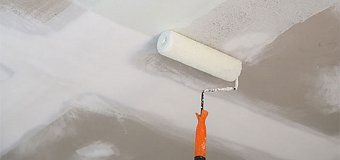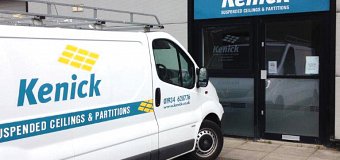Non-licensed work with asbestos
Most higher risk work with asbestos must only be done by a licensed contractor but at Kenick we are able to undertake the safe removal of non-licensed material and have fully trained operatives who have many years of working with asbestos material
To be exempt from needing a licence the work must be:
- Sporadic and of low intensity - to be considered sporadic and of low intensity the concentration of asbestos in the air should not exceed 0.6f/cm3 measured over 10 minutes
- Carried out in such a way that the exposure of workers to asbestos will not exceed the legal control limit of 0.1 asbestos fibres per cubic centimeter of air (0.1 f/cm3) (averaged over a four hour period)
- Meet at least one of the four following conditions:
- It is a short non-continuous maintenance task, with only non-friable materials (friability describes how likely an ACM is to release asbestos fibres when worked on, so non-friable materials will only release a small number of fibres during work); or
- It is a removal task, where the ACMs are in reasonable condition and are not being deliberately broken up, and the asbestos fibres are firmly contained within a matrix, eg the asbestos is coated, covered or contained within another material, such as cement, paint or plastic; or
- It is a task where the ACMs are in good condition and are being sealed or encapsulated to ensure they are not easily damaged in the future; or
- It is an air monitoring and control task to check fibre concentrations in the air, or it's the collection and analysis of asbestos samples to confirm the presence of asbestos in a material.
Examples of non-licensed work with asbestos
- Cleaning up small quantities of loose/ fine debris containing ACM dust (where the work is sporadic and of low intensity, the control limit will not be exceeded and it is short duration work)
- Drilling of textured decorative coatings for installation of fixtures/fittings
- Encapsulation and sealing-in work on asbestos-containing materials (ACMs) that are in good condition
Maintenance work involving:
- asbestos cement products (eg on roof sheeting, tiles and rainwater goods)
- asbestos in ropes, yarns and woven cloth
- asbestos gaskets or asbestos rope cords (including removal as part of repair and upkeep of equipment) if this can be done without substantial breakage
- asbestos-containing thermoplastic and vinyl floor tiles, bitumen roof felt, shingles, damp-proofing coatings, and mastics
- asbestos-containing felt and paper
- plastic paint coatings, PVC floors, panels and sealing compounds
- asbestos-containing conveyor belts/drive belts, bonded rubber, electric cables
- resin-based ACMs such as friction products (eg brake linings)
- Painting/repainting AIB that is in good condition
Removal of:
- asbestos cement products, (eg roof sheeting and rainwater goods) provided the material is carefully handled/removed without breaking up; this includes work with asbestos cement which is weathered but not otherwise substantially damaged
- small areas of textured decorative coatings using suitable dust-reducing methods, to support other activities such as installation/replacement of smoke alarms and light fittings
- textured decorative coatings provided that this can be done without deterioration of the material, (eg if the backing board is carefully cut around to achieve virtually intact removal)
- loosely fixed (eg screwed) asbestos insulating board (AIB) panels in order to gain access to areas for other maintenance activities (eg under a bath to carry out pipework maintenance, or for access to a ceiling void for repair of lighting). This also includes re-attaching the panels after the work is done
- an AIB door with asbestos fire proofing
Short duration work:
- to repair minor damage to AIB
- involving drilling holes in AIB (eg when installing shelving)
Other work:
- on other materials containing asbestos (such as paints, bitumen, resins, rubber, etc) where the fibres are bound in a matrix which prevents most of them being released (this includes, typically, aged/weathered AC)
- associated with collecting and analysing samples to identify the presence of asbestos
Kenick Services Ltd
The Drill Hall
Warne Road
Weston-super-Mare,
North Somerset
BS23 3SD
T: 01934 628776
E: mail@kenick.co.uk




